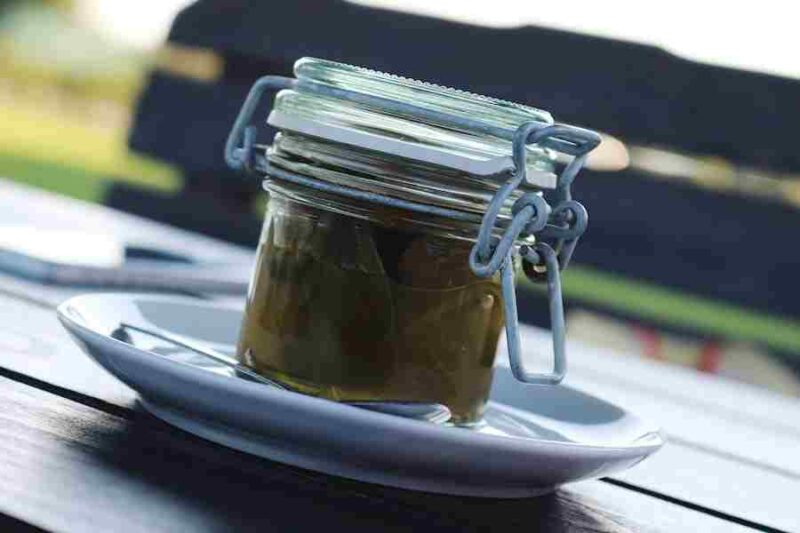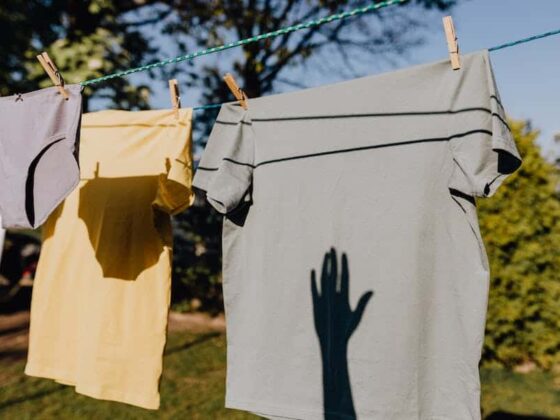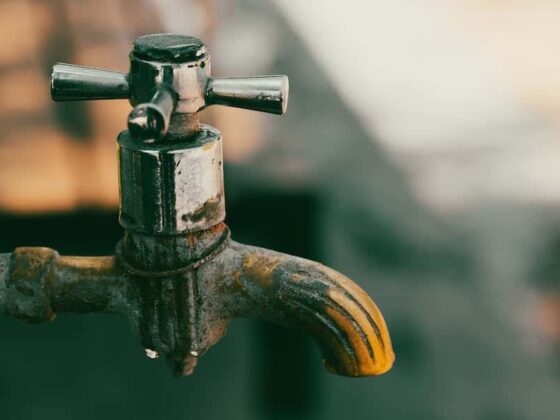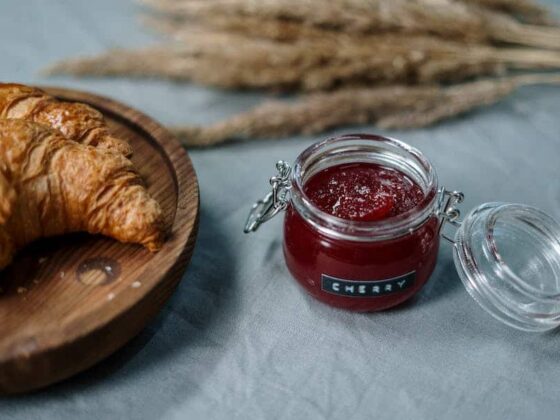Homemade pickles have gained immense popularity in recent years, with many people embracing the art of preserving and flavoring vegetables through the pickling process. Whether you’re a seasoned pickling enthusiast or a curious beginner, it’s essential to understand the shelf life of homemade pickles. Knowing how long homemade pickles last is crucial for maintaining their quality, safety, and taste. In this article, we will explore the factors that influence the longevity of homemade pickles, discuss signs of spoilage to watch out for, and provide tips on extending their shelf life. So, if you’ve ever wondered how long your homemade pickles can stay fresh and delicious, read on to discover the answers.
How Long Does Homemade Pickles Last?
The shelf life of homemade pickles can vary depending on various factors, such as the pickling method, ingredients used, and storage conditions. Generally, refrigerator pickles can last about 1 to 2 months when stored properly. Fermented pickles can have a longer shelf life, lasting anywhere from several months to a year or more, thanks to the natural fermentation process. Canned pickles, when properly sealed and stored in a cool, dark place, can last up to a year or even longer. However, it’s crucial to inspect the pickles for any signs of spoilage, such as mold or off smells, and discard them if they appear unsafe to consume. Proper storage and regular quality checks are vital to enjoying your homemade pickles for an extended period.
The Popularity Of Homemade Pickles
In recent years, homemade pickles have experienced a surge in popularity among food enthusiasts and home cooks. The trend can be attributed to several factors. Firstly, homemade pickles offer a unique and customizable flavor profile that mass-produced store-bought options can’t replicate. By experimenting with different combinations of vegetables, spices, and brines, individuals can tailor their pickles to suit their tastes.
Secondly, homemade pickles allow people to connect with traditional preservation methods and reclaim the lost art of pickling. Many seek ways to preserve seasonal produce and reduce food waste, and pickling provides a practical and flavorful solution. By engaging in the pickling process, people can extend the shelf life of vegetables and enjoy their harvest throughout the year.
Additionally, the rise of the do-it-yourself (DIY) culture and the desire for more sustainable and natural food options have contributed to the popularity of homemade pickles. Making pickles at home allows individuals to control the quality of ingredients, avoid preservatives or artificial additives, and promote a more sustainable and environmentally friendly approach to food consumption.
Furthermore, social media platforms and online communities have played a significant role in popularizing homemade pickles. Sharing recipes, techniques, and mouth-watering images of homemade pickles on platforms like Instagram and Pinterest has inspired and encouraged others to try their hand at pickling, creating a vibrant and supportive community of pickle enthusiasts.
Overall, the growing popularity of homemade pickles can be attributed to the desire for unique flavors, a connection to traditional preservation methods, sustainability concerns, and the influence of online platforms. As more individuals discover the joys of pickling, the trend will likely continue to thrive in the culinary world.
Explanation Of The Pickling Process, Including Ingredients And Techniques
The pickling process involves preserving and flavoring vegetables by immersing them in a solution that typically consists of vinegar, salt, and spices. Here are the key points to explain the pickling process, including ingredients and techniques:
Vegetables: A wide variety of vegetables can be pickled, including cucumbers, carrots, onions, cauliflower, peppers, and more. The choice of vegetables depends on personal preference and availability.
Brine: The brine is the pickling solution that provides acidity and flavor. It usually consists of vinegar, water, salt, and sometimes sugar. The type of vinegar used can vary, including white distilled vinegar, apple cider vinegar, or rice vinegar. The ratio of vinegar to water and the amount of salt and sugar can be adjusted based on taste preferences.
Spices and Seasonings: Various spices and seasonings are added to the brine to enhance the flavor of the pickles. Common spices include dill seeds, mustard seeds, peppercorns, garlic, ginger, cloves, and bay leaves. These ingredients infuse the pickles with aromatic and savory notes.
Preparation: The vegetables are prepared by washing them thoroughly and cutting them into desired shapes and sizes. Some recipes may require blanching or briefly cooking the vegetables to achieve the desired texture.
Brining Process: The prepared vegetables are placed in a sterilized jar or container and covered with brine. It’s essential to ensure the vegetables are fully submerged in the brine to prevent spoilage. The container is then sealed tightly.
Flavor Development: The pickles sit at room temperature for a specific period, typically ranging from a few hours to several days. During this time, the flavors from the brine and spices infuse into the vegetables, creating the tangy and savory taste of pickles. Fermentation may occur during this process, leading to the development of complex flavors.
Storage: Once the desired flavor is achieved, the pickles can be transferred to the refrigerator or stored at a cool temperature to slow the fermentation process and extend their shelf life. Refrigeration helps maintain the texture and crispness of the pickles.
Maturation: Pickles generally improve with time as they continue to absorb flavors and develop a more pronounced taste. The maturation period can vary based on personal preference, but it typically ranges from a few days to a few weeks.
What Factors Affecting The Shelf Life Of Homemade Pickles?
Several factors can influence the shelf life of homemade pickles. Understanding these factors is crucial for maintaining the quality and safety of your pickles. Here are the key factors that can affect the shelf life of homemade pickles:
Canning and Sealing Techniques:
If you choose to can your pickles for long-term storage, proper canning techniques are essential. Inadequate sealing or failure to achieve a proper vacuum seal can lead to air and bacteria contamination, resulting in spoilage. Ensure the jars are properly sterilized and sealed according to recommended canning practices.
Ingredients and Freshness:
The quality and freshness of the ingredients used in pickling can impact the shelf life of the final product. It’s essential to use fresh, crisp vegetables that are free from any signs of spoilage. Additionally, using high-quality vinegar, spices, and other ingredients can contribute to the overall flavor and longevity of the pickles.
Acidity Level:
The acidity of the pickling solution plays a vital role in preserving the pickles. A sufficiently acidic environment inhibits the growth of harmful bacteria and helps extend the shelf life. It’s crucial to follow tested recipes or guidelines to ensure the proper acid-to-vegetable ratio.
Storage Temperature and Conditions:
The storage temperature and conditions significantly impact the shelf life of homemade pickles. Generally, storing pickles in a cool, dark place helps maintain their quality for a longer time. Refrigeration is efficient for extending the shelf life of refrigerator pickles, as the cold temperature slows down bacterial growth.
Contamination and Cross-Contamination:
Proper hygiene and avoiding cross-contamination are vital to prevent harmful bacteria into the pickles. Use clean utensils and equipment during the pickling process, and ensure that the containers and storage jars are free from any contaminants.
Sugar Content:
Some pickle recipes may include sugar as an ingredient. While sugar can enhance the flavor and balance the acidity, it can also contribute to the growth of bacteria if used excessively. It’s essential to use sugar in moderation and follow tested recipes.
Exposure to Air:
Oxygen exposure can lead to the deterioration of pickles and promote the growth of molds and yeasts. Ensure that the pickles are fully submerged in the brine or liquid to minimize contact with air, especially during storage.
Tips For Maintaining And Lasting Pickles
To ensure the longevity and quality of your homemade pickles, here are some valuable tips to consider:
- Choose glass jars or containers designed explicitly for pickling. Ensure they have airtight seals to prevent air and moisture from entering, which can lead to spoilage. Mason jars are a popular choice for canning pickles.
- Before filling the jars with pickles and brine, sterilize them in boiling water or run them through a dishwasher cycle. This step helps eliminate potential bacteria that could spoil the pickles.
- Ensure the pickles are fully submerged in the brine or liquid. Any exposed parts may spoil quickly due to oxygen exposure. Consider using weights or fermentation lids to submerge the pickles during the brining process.
- If you’re making refrigerator pickles, store them at a consistent temperature of around 40°F (4°C). This helps maintain their crispness and flavor. Remember to label the jars with the date of preparation for reference.
- If you can use your pickles for long-term storage, follow safe canning practices. This includes processing the jars in a water bath or pressure canner, depending on the acidity level of the pickles. Consult reliable canning resources or recipes for precise instructions.
- Exposure to direct sunlight can lead to discoloration and flavor deterioration. Store pickles in a cool, dark place, such as a pantry or cellar, away from sunlight or heat sources.
- Periodically inspect your pickles for any signs of spoilage. Look out for mold growth, off odors, mushy texture, or any other indications of spoilage. If you notice any abnormalities, discard the affected pickles and inspect the remaining ones.
Final Words
Homemade pickles are a delightful way to preserve and enjoy the flavors of seasonal vegetables all year round. By understanding the factors that affect their shelf life and implementing proper storage and preservation techniques, you can ensure that your homemade pickles stay fresh, delicious, and safe to consume. Consider factors such as canning techniques, ingredient freshness, acidity levels, storage conditions, and hygiene practices. Regularly inspect your pickles for any signs of spoilage and discard any that appear unsafe.










